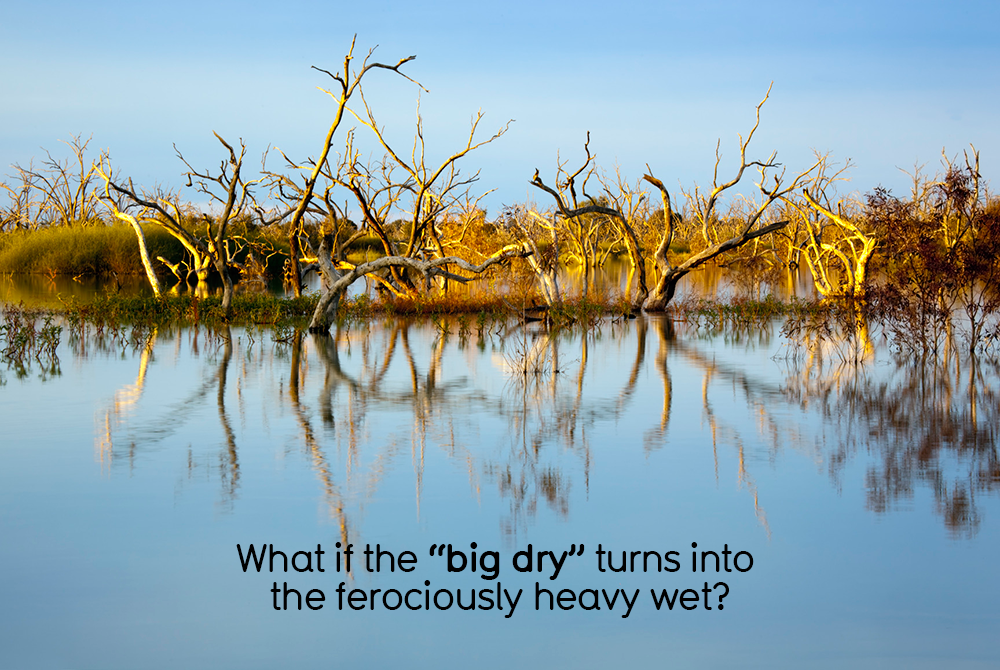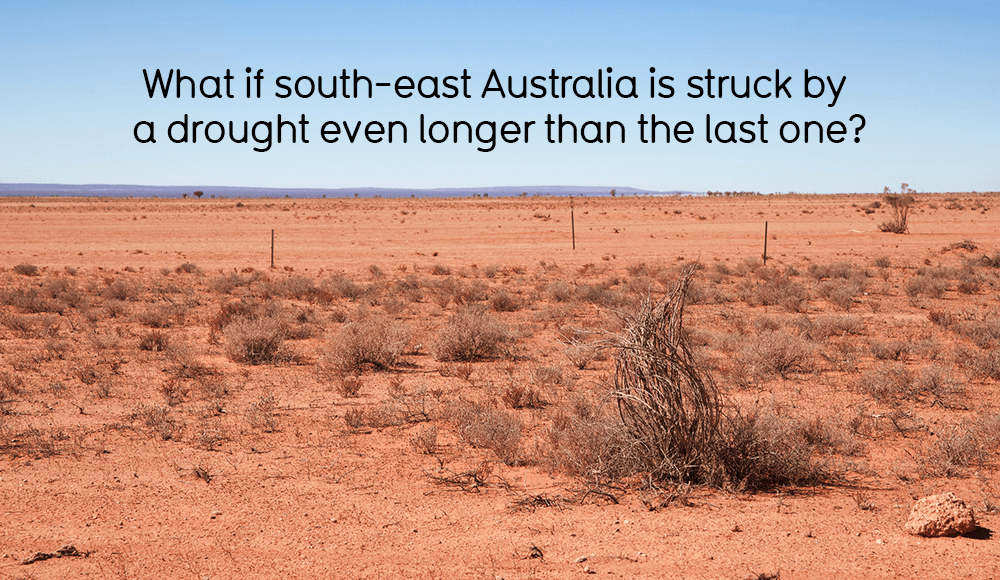Social modelling of water systems
Water “what ifs”
Anyone planning a water management system for the long term faces a mind-boggling array of “what ifs”. What if south-east Australia is struck by a drought even longer than the last one? What if the “big dry” turns into the ferociously heavy wet? What if bushfires rip through water catchments, or storm surges overwhelm an existing system’s ability to cope?

The most confounding what ifs, however, relate to society itself. What if, through a mass conversion in values, more people opt for self-sufficient, decentralised infrastructure such as stormwater harvesting? What if a breakthrough technology falls victim to a public backlash? What if people decide to use significantly more water, or less – or the same amount but in entirely unexpected ways?

Forward-looking companies and institutions are exploring a wide range of scenarios through contingency plans, and there are models to map out the hydrological, physical, and infrastructure aspects of water management; but the social and institutional dimensions have always been trickier to forecast. Sub-project A4.3 (Socio-technical modelling tools to examine urban water management scenarios) at the CRC for Water Sensitive Cities (CRCWSC) addresses this by developing an integrated computational planning tool that incorporates social modelling, taking some of the guesswork out of those worrying “what if” scenarios.
“It’s a model about identifying future options and the most robust solution pathways going forward,” explains Rebekah Brown, a Professor in the School of Geography and Science at Monash University and leader of the CRCWSC’s Society Program (Program A). “Really smart strategists in water get together in a room and think through these things, but they’re limited by their own human cognition. Now we’re developing a tool where they can play and experiment.”
The SimCity of water planning
The genesis of this groundbreaking model can be traced to a European Union project called PREPARED, led by Professors Ana Deletic and Rebekah Brown. Working with EU research partners and Melbourne Water, the team developed an integrated urban water model called DAnCE4Water (Dynamic Adaptation for eNabling City Evolution for Water). Ana Deletic, a Professor of Civil Engineering at Monash University, told us it could be compared to a more serious version of the computer game SimCity, using agent-based algorithms to model water management scenarios for the real world. “It is kind of like playing games in virtual space and saying ‘what if?’ and exploring all possible options, and looking at how robust they are against uncertainty.”
DAnCE4Water consists of three modules. The Urban Development Module simulates how water infrastructure will develop as a city grows. The Bio-Physical Module looks at the opportunities for decentralised infrastructure at the household level, such as rain gardens. But the most innovative component is the Societal Transitions Module (STM), principally developed by Dr Fjalar de Haan when he was a research fellow assigned to the PREPARED Project, and subsequently when he was an Australian Research Council (ARC) fellow undertaking further research through an ARC Linkage Grant.
The Societal Transitions Module (STM)
The STM starts from the premise that there are basic societal needs, and that a system emerges in typical patterns in response to those. For example, if there are new needs, such as a rise in environmental values, then a new solution might emerge – like innovative green infrastructure. This would be a bottom-up approach, known as the empowerment pattern. If the new needs are met by changes to existing infrastructure, this would be what’s known as the adaptation pattern.
Classic modelling might show the most likely path, the average path, or the path that is theoretically prescribed; but the STM shows the entire range of scenarios, thus acknowledging the deep uncertainty involved in simulating the past or future. The result is a huge number of pathways, revealing everything that possibly could have happened over the simulation period.
If the sheer number of pathways seems burdensome or impractical, that’s not the case when the model is actually run. “We look at these pathways and we find that there are not twenty thousand different pathways – a lot of them look alike,” says Dr de Haan. “So even if you assume that all these patterns can emerge over time, what actually happens on the ground is that for the overall pathway there’s only a couple of ideal types.”



Calibration and validation
As part of the PREPARED Project, the team collected data on the development of stormwater quality treatment technology at Scotchman’s Creek, Melbourne, and fed it into the STM. Five patterns emerged, and one of them matched the historical development almost exactly. The other four patterns were fascinating “what if” histories of what might have happened if different policies or social values had been in place.
The team has also completed a theoretical calibration, comparing the results of the model against the ideal curves for social transitions. One ideal curve takes an S shape: uptake of a technology starts out relatively low, shoots up quickly, and then stabilises at a high level. Another curve shows rapid uptake followed by a sharp plunge, representing a backlash. “All these kinds of ideal types we’ve been able to reproduce with the model,” says Dr de Haan.
Finally, an ARC Linkage Grant led by Professors Brown and Deletic is seeking to extend knowledge of how exploratory models like the STM can be used in strategic planning, while also broadening the application of social modelling. All of the background intellectual property from this work will be incorporated into the CRC’s offerings.
Putting it all together
The CRCWSC can now build on this strong foundation to bring modelling capability to its stakeholders. The opportunity is to expand the model to cover the full water cycle and to incorporate an economics module. At the same time, the interface will be upgraded into a user-friendly web-based package. The team involved in the PREPARED Project and the ARC Linkage Grant – made up of Brown, Deletic, and de Haan – is continuing its pioneering work with the CRC, and Participants can expect to benefit significantly from these advances over the next couple of years.
One of the core benefits will be creating water management plans that are more robust over the long term. Optimal solutions may be efficient for a very precise set of circumstances; but what if those circumstances change? What if, in other words, our intuition about where things are heading turns out to be catastrophically wrong? As Dr de Haan says, “What is optimal now is not optimal tomorrow when the world has changed.” Cities need to plan for a wide range of scenarios, and Sub-project A4.3 is refining a powerful tool to discover resilient pathways for the future.
Greg Foyster for the Mind Your Way team